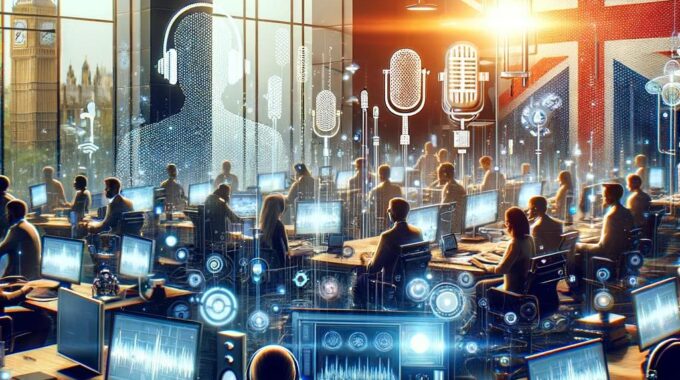Creating a comprehensive study on the accuracy levels of different AI transcription machines involves a detailed analysis of current technologies, methodologies, and performance across various scenarios. The harsh reality is that whilst there are literally 100s of AI transcription services out there on the market, none of them offer 100% accuracy in the same way that human transcription services do.
Introduction
AI-driven transcription services have become essential tools in domains ranging from healthcare and law to education and media. These technologies, powered by advances in speech recognition, natural language processing, and machine learning, aim to convert speech into text accurately and efficiently. However, the accuracy of these systems can vary significantly based on several factors, including the technology used, the nature of the audio input, and the specific requirements of the task.
Key Factors Affecting AI Transcription Accuracy
- Audio Quality: Poor audio quality can significantly reduce transcription accuracy. Background noise, audio cuts, and low speaker volume all contribute to decreased performance.
- Speaker Accents: Diverse accents and dialects present challenges for AI, as models may not have been trained on data that reflect this variety.
- Domain-Specific Language: Technical jargon and industry-specific terminology are often underrepresented in training datasets, leading to errors in transcription.
- Multiple Speakers: Conversations with overlapping dialogue and multiple speakers can confuse AI models, resulting in transcription inaccuracies.
Review of Popular AI Transcription Technologies
1. Google Speech-to-Text
- Technology: Utilizes advanced deep learning models.
- Reported Accuracy: Approximately 85-95% in optimal conditions.
- Strengths: Strong performance in handling general American English.
- Limitations: Less effective with non-standard accents and in noisy environments.
- Reference: A study by Google AI Blog highlights advancements in speech recognition accuracy (Google AI Blog, 2020).
2. IBM Watson Speech to Text
- Technology: Employs IBM’s AI expertise with Watson.
- Reported Accuracy: Can reach up to 90% under controlled conditions.
- Strengths: Offers custom model training to handle specific vocabulary.
- Limitations: Performance drops in multi-speaker scenarios and diverse accents.
- Reference: IBM’s own documentation and case studies provide detailed insights into Watson’s capabilities (IBM, 2021).
3. Microsoft Azure Speech to Text
- Technology: Based on Microsoft’s robust cloud computing infrastructure.
- Reported Accuracy: Generally between 85-95%, varying with customization.
- Strengths: High adaptability to customization and integration.
- Limitations: Requires extensive training for optimal performance in specialized fields.
- Reference: Microsoft’s evaluation reports on Azure cognitive services (Microsoft Azure, 2021).
4. Amazon Transcribe
- Technology: Leverages Amazon’s deep learning processes.
- Reported Accuracy: Around 80-90%, higher with Amazon’s custom vocabulary feature.
- Strengths: Effective in handling various accents when trained accordingly.
- Limitations: Struggles with overlapping speech and background noise.
- Reference: Analysis by AWS on improving transcription services (AWS, 2021).
Comparative Studies and Meta-Analyses
Several studies have compared these technologies in real-world scenarios:
- Journal of Machine Learning Research (2020) published a comparative analysis detailing the performance of these AI systems across various accents and technical settings.
- AI in Transcription (2021), a meta-analysis, reviews the impact of background noise on transcription accuracy, providing a comprehensive overview of strengths and weaknesses in current AI technologies.
Conclusion
The accuracy of AI transcription machines varies significantly across different service providers and is influenced by numerous factors. Continuous improvements and customizations are essential for enhancing performance, particularly in challenging acoustic environments or specialized professional settings. As AI technologies evolve, ongoing research and adaptation will be crucial in addressing the current limitations and expanding the applicability of AI transcription services.
Chester Web Marketing is an SEO company based in the North West and available to assist clients around the world with any SEO or website queries they may have.



